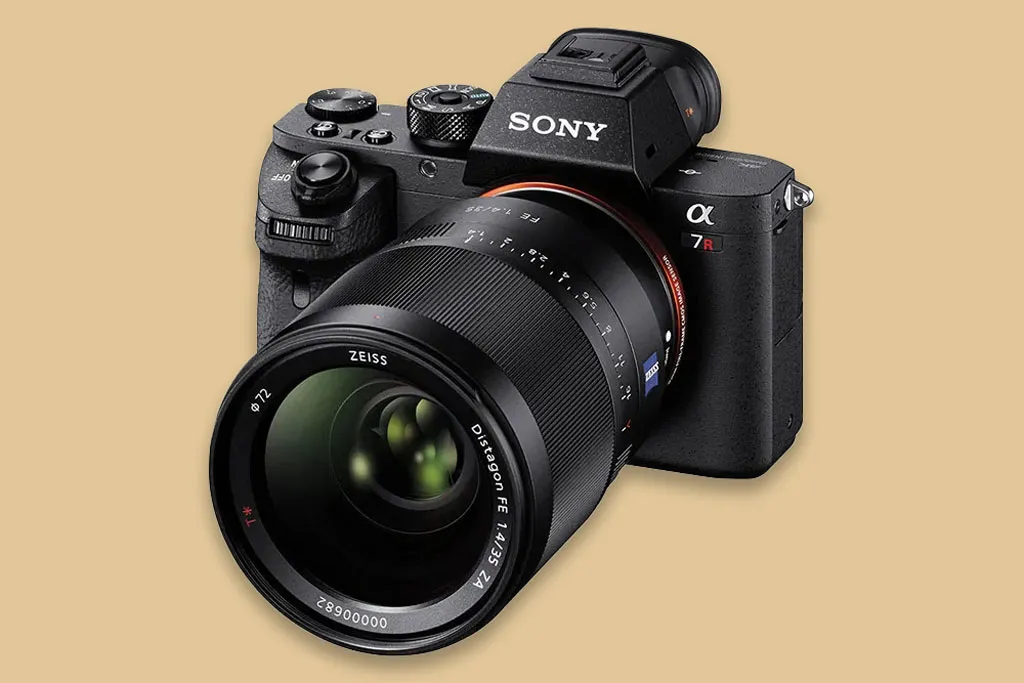In the rapidly evolving landscape of automotive technology, artificial intelligence continues to reshape how vehicles are designed, manufactured, operated, and experienced. The past two months have witnessed significant advancements across the industry, from autonomous driving breakthroughs to innovative in-car AI assistants. Let’s explore the most impactful recent developments that are steering the automotive sector toward a smarter future.
Autonomous Driving Advances
Honda-Backed Helm.ai Unveils Vision System
Just yesterday (June 19, 2025), Honda-backed Helm.ai unveiled its innovative camera-based system designed to interpret urban environments ^1. This technology, named Helm.ai Vision, combines images from multiple cameras to create a comprehensive bird’s-eye view map, enhancing vehicle planning and control mechanisms ^1. The company is currently in discussions with various automotive manufacturers to integrate its autonomous driving capabilities into mainstream vehicles ^1.
Unlike competitors who rely on additional sensors such as lidar and radar, Helm.ai adopts a vision-centric strategy similar to Tesla’s approach, potentially reducing costs while maintaining effectiveness ^1. The system is compatible with hardware platforms from companies like Nvidia and Qualcomm, allowing automotive manufacturers to integrate it into their existing vehicle systems ^1.
Waymo Expands Testing and Defines Safety Standards
Waymo recently announced plans to bring its autonomous cars back to New York City for testing in July 2025 ^2. While the vehicles will initially be manually driven, the company ultimately aims to introduce the same autonomous ride-hailing service it currently offers in San Francisco, Phoenix, and Los Angeles ^2. This expansion represents a significant step in Waymo’s growth strategy, which has already seen the company extend its service areas around San Francisco and Los Angeles, and enter Austin with Uber’s assistance in March ^2.
In a parallel development, Waymo has released a paper outlining its processes for determining whether its autonomous driving technology is ready for deployment in real-world environments ^3. The publication details twelve acceptance criteria underpinning its safety assessments and the governance structure ensuring consistent decision-making ^3. This systematic approach supports decision-making across the community and aims to encourage greater transparency while contributing to the development of industry-wide standards for autonomous vehicle safety assessment ^3.
Tesla FSD Updates and Challenges
Tesla’s Full Self-Driving (FSD) program has faced challenges in recent months, with no significant improvements observed throughout the year according to available data^4. The company’s last major FSD update, version 13, was released in December 2024, and despite CEO Elon Musk’s previous claims of substantial improvements, crowdsourced data suggests more modest gains ^4.
In Europe, Tesla continues to navigate regulatory hurdles for FSD deployment ^5. Elon Musk recently commented that the company is waiting for approval from Dutch authorities and then the EU to start rolling out FSD in Europe ^5. The process has been frustratingly slow, with multiple committee meetings discussing autonomy regulation but repeatedly delaying approvals ^5. Despite these challenges, Tesla has demonstrated FSD working smoothly on European roads, recently sharing a video of supervised testing in Rome ^5.
AI Integration in Vehicle Development and Manufacturing
Market Growth and Industry Trends
The AI in Automotive Market, valued at USD 4.8 Billion in 2024, is projected to reach USD 186.4 Billion by 2034, growing at an impressive CAGR of 42.80% ^6. This exponential growth reflects the rising demand for intelligent automotive solutions as AI technologies continue to redefine the future of mobility ^6. Leading automakers and technology companies are heavily investing in AI-driven systems, particularly for autonomous vehicles and next-generation Advanced Driver Assistance Systems (ADAS) ^6.
According to a recent survey of over 650 automotive professionals worldwide, maintaining industry competitiveness was cited as the top market challenge by 58% of respondents, a 28% increase from the previous year ^7. The majority of respondents (42%) reported using AI in the design of fully autonomous vehicles, while another 38% said AI is affecting some autonomous components ^7. This represents a 5% increase in AI use for autonomy year-over-year, suggesting steady momentum in the industry ^7.
Ford’s AI Initiatives
Ford is expanding its use of artificial intelligence to speed up vehicle development and improve efficiency ^8. According to Ford’s director of artificial intelligence, Bryan Goodman, the company needs to accelerate its processes to remain competitive, particularly against Chinese manufacturers with faster engineering cycle times^8. While Ford designers currently use traditional clay model methods before passing designs to engineers for time-consuming simulations and stress tests, Goodman proposes using AI to automate and expedite this process ^8.
To achieve this, Ford will utilize a variety of AI models including OpenAI, Anthropic, and DeepSeek, while preparing its data centers for the next generation of NVIDIA chips^8. Additionally, Ford dealers will benefit from AI through a new partnership with Marchex, which will provide them with Marchex Exchange for Sales and Service^9. This technology leverages advanced AI to deliver actionable insights on customer interactions, helping dealers maximize their opportunities by automatically categorizing customer calls based on intent and providing real-time alerts on missed sales and service opportunities ^9.
BMW’s DeepSeek Integration
BMW is set to integrate DeepSeek AI into their 2025 car models, aiming to revolutionize how drivers interact with their vehicles ^10. This technology will enhance various aspects of driving, from vehicle interaction to adaptation based on driving style^10. Unlike older in-car systems that require human input to process commands, DeepSeek uses predictive technology to learn from habits and preferences, making the car smarter with every drive ^10.
The integration of DeepSeek will provide real-time assistance, with the AI learning from previous drives to help with traffic predictions, weather updates, and potential detours ^10. This represents just the beginning of BMW’s broader vision for AI-powered cars, with plans for even more advanced AI by 2030 that can handle autonomous driving, smart traffic navigation, and emotion-based personalization ^10.
AI-Enhanced User Experience
Mercedes-Benz OTA Updates
Mercedes-Benz recently unveiled the MBUX 2.6 software update, which will be rolled out over-the-air to more than two million vehicles worldwide^11. For some electric models, the update includes improvements to route planning with charging stops ^11. The function ‘Alternative Live Routes’ within the MBUX infotainment system, when used in conjunction with ‘Navigation with Electric Intelligence,’ now intelligently calculates multiple routes to the destination, continuously updating during the journey to account for factors such as driving distance, traffic conditions, and estimated charging times ^11.
This update is available for electric vehicles equipped with the second-generation MBUX infotainment system, including the electric G-Class, EQS, EQS SUV, EQE, EQE SUV, EQA, and EQB (from model year 2023/2 onwards) ^11. For off-road capable electric vehicles, a new feature called ‘Offroad Track’ is also being introduced, allowing customers to record off-road routes, share them, and explore uploaded tracks from other users ^11.
Stellantis and Mistral AI Partnership
Stellantis and Mistral AI are deepening their strategic collaboration to integrate artificial intelligence across multiple areas, from vehicle engineering to in-car experiences^12. This partnership leverages Mistral AI’s expertise in large language models (LLMs) and AI-driven automation to improve data analysis, streamline development, and enhance customer interaction ^12.
The latest initiative under this partnership is an advanced in-car assistant designed to provide real-time, conversational support for drivers ^12. This AI-powered assistant functions as a voice-enabled user manual, allowing customers to ask questions about vehicle features, troubleshooting, or warning indicators and receive immediate guidance through natural conversation ^12. Beyond the in-car assistant, Stellantis and Mistral AI are exploring several other AI-driven initiatives, including Bill of Materials Data Intelligence, Vehicles Feedback Data Analysis, and AI-Driven Anomaly Detection ^12.
Chinese Manufacturers’ AI Innovations
NIO’s Chip Development and Expansion
NIO has been making significant strides in AI chip development, with plans to potentially spin off its chip business to supply other automakers. The company launched its in-house developed smart driving chip, Shenji NX9031, in December 2023. The ET9, which began deliveries in late March, is equipped with two Shenji NX9031 chips, while the updated ET5, ET5 Touring, ES6, and EC6, launched last month, each feature one Shenji chip ^13.
NIO’s founder, chairman, and CEO William Li has stated that NIO’s chips and operating system are open to the entire industry and welcomes peers to use them. At Auto Shanghai 2025 in April, NIO showcased 11 models and 12 Full Stack technologies from its three brands—NIO, ONVO, and firefly. Li announced that NIO is entering a year of technological harvest and is rapidly moving into a new product cycle, planning to launch nine models under its three brands with a major new model every quarter ^14.
BYD’s Market Performance
BYD continues to dominate the Chinese EV market, with registrations in week 24 of 2025 (June 9-15) reaching 70,300 vehicles, up 28.2% from 54,850 units the week before and rising 22.90% compared to the same period last year. This performance underscores BYD’s strong position in the highly competitive Chinese EV market, which has been described as “brutal” by industry observers ^15.
Regulatory and Security Considerations
EU AI Act Implementation
The European Union’s AI Act, the world’s first comprehensive regulation on artificial intelligence, is being implemented with a phased approach. The ban on AI systems posing unacceptable risks began to apply on February 2, 2025, with codes of practice set to apply nine months after entry into force. Rules on general-purpose AI systems that need to comply with transparency requirements will apply 12 months after entry into force, while high-risk systems will have 36 months to comply with the requirements.
The new rules establish obligations for providers and users depending on the level of risk of AI qualification. Banned AI applications in the EU include cognitive behavioral manipulation of people or specific vulnerable groups, social scoring AI, biometric identification and categorization of people, and real-time and remote biometric identification systems, such as facial recognition in public spaces ^16.
Cybersecurity Challenges
As AI becomes more integrated into vehicles, new cybersecurity challenges are emerging. According to VicOne’s 2025 Automotive Cybersecurity Report, AI integration will introduce new risks of unauthorized commands, data breaches, and other cyberattacks. Voice assistance systems, while revolutionizing vehicle operation with hands-free functionality, give rise to novel threats such as prompt injection attacks ^17.
The report also highlights that platform standardization will expose millions of vehicles to systemwide vulnerabilities, EV charging infrastructure will emerge as a hotspot for cyberthreats, and autonomous vehicles will face risks like sensor manipulation. These challenges underscore the urgent need for robust, collaborative defense strategies to safeguard vehicles, infrastructure, and data in an increasingly connected world ^17.
Conclusion
The past two months have witnessed remarkable advancements in AI applications within the automotive industry. From autonomous driving breakthroughs and in-car AI assistants to manufacturing innovations and cybersecurity challenges, artificial intelligence is reshaping every aspect of the automotive landscape. As we move forward, the integration of AI will continue to accelerate, driving the industry toward a future of smarter, safer, and more connected vehicles.
Sources
^6 https://www.globenewswire.com/news-release/2025/05/01/3072620/28124/en/AI-in-the-Automotive-Industry-2025-2034-Image-Recognition-Paves-the-Way-for-US-110-Billion-in-Autonomous-Driving-Innovation-by-2034.html
^18 https://www.ai.se/en/news/automotive-industry-must-actively-shape-ais-future-sector
^7 https://www.perforce.com/blog/sca/automotive-industry-trends-ai
^19 https://www.ciklum.com/resources/blog/future-of-automotive-ai-2025
^20 https://www.here.com/learn/blog/autonomous-driving-features-trends-2025
^21 https://impel.ai/newsroom/rocked-and-impel-partner-to-launch-automotives-first-ai-certification-program/
^1 https://www.reuters.com/business/autos-transportation/honda-backed-helmai-unveils-vision-system-self-driving-cars-2025-06-19/
^5 https://www.notateslaapp.com/news/2815/tesla-fsd-in-europe-june-update
^22 https://www.notateslaapp.com/software-updates/version/2025.14.200/release-notes
^4 https://electrek.co/2025/06/12/tesla-full-self-driving-hasnt-improved-all-year-and-musk-points-to-more-wait/
^23 https://drive-parts.com.ua/en/mask-dilytsia-dorozhnoiu-kartoiu-tesla-fsd-shcho-vkhodyt-do-nastupnoho-onovlennia-fsd/
^3 https://futuretransport-news.com/waymo-details-criteria-for-safe-deployment-of-autonomous-vehicles/
^11 https://www.electrive.com/2025/04/14/mercedes-introduces-new-ev-functions-via-ota-update/
^10 https://staragile.com/blog/bmw-to-integrate-deepseek-ai-in-2025-car-models
^2 https://www.engadget.com/transportation/waymo-will-start-testing-its-autonomous-cars-in-new-york-again-190530022.html
^9 https://fordauthority.com/2025/06/ford-dealers-will-get-ai-with-new-partnership/
^24 https://impel.ai/newsroom/impel-and-ford-direct-partnership-conversational-ai-solutions/
^25 https://news.dealershipguy.com/p/impel-ford-partner-to-bring-enhanced-chatbots-to-dealers-2025-01-23
^26 https://news.gm.com/home.detail.html/Pages/news/us/en/2024/dec/1210-gm.html
^12 https://www.stellantis.com/en/news/press-releases/2025/february/stellantis-and-mistral-ai-strengthen-strategic-partnership-to-enhance-customer-experience-vehicle-development-and-manufacturing
^27 https://www.reuters.com/business/media-telecom/qualcomm-make-data-center-processors-that-connect-nvidia-chips-2025-05-19/
^8 https://fordauthority.com/2025/03/ford-using-deepseek-ai-nvidia-gpus-to-speed-up-development/
^28 https://www.automotivetestingtechnologyinternational.com/news/vehicle-development/gm-halts-cruise-robotaxi-development-focuses-on-personal-autonomous-vehicles.html
^15 https://carnewschina.com/2025/06/17/china-ev-registrations-in-week-24-nio-2630-xpeng-6390-tesla-15500-byd-70300/
^13 https://cnevpost.com/2025/06/19/nio-chip-spin-off-to-pave-way-supplying-other-automakers/
^14 https://www.nio.com/news/20250423001
^29 https://www.automotive-iq.com/events-automotive-generative-ai
^16 https://www.europarl.europa.eu/topics/en/article/20230601STO93804/eu-ai-act-first-regulation-on-artificial-intelligence
^17 https://vicone.com/reports/2025-automotive-cybersecurity-report
^30 https://www.go-electra.com/en/newsroom/electric-vehicle-2025/

